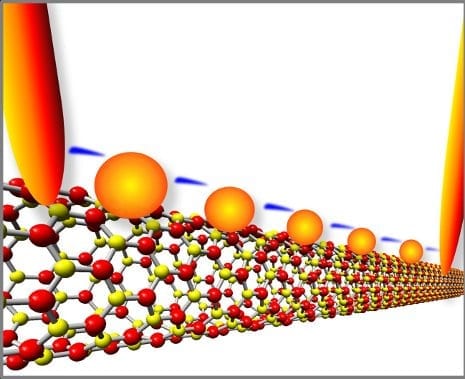
- Image via Wikipedia
For someone with a severe, incurable lung disorder such as cystic fibrosis or chronic obstructive pulmonary disease, a lung transplant may be the only chance for survival. Unfortunately, it’s often not a very good chance. Matching donor lungs are rare, and many would-be recipients die waiting for the transplants that could save their lives.
Such deaths could be prevented if it were possible to use stem cells to grow new lungs or lung tissue. Specialists in the emerging field of tissue engineering have been hard at work on this for years. But they’ve been frustrated by the problem of coaxing undifferentiated stem cells to develop into the specific cell types that populate different locations in the lung.
Now, researchers from the University of Texas Medical Branch at Galveston have demonstrated a potentially revolutionary solution to this problem. As they describe in an article published electronically ahead of print by the journal Tissue Engineering Part A, they seeded mouse embryonic stem cells into “acellular” rat lungs — organs whose original cells had been destroyed by repeated cycles of freezing and thawing and exposure to detergent.
The result: empty lung-shaped scaffolds of structural proteins on which the mouse stem cells thrived and differentiated into new cells appropriate to their specific locations.
“In terms of different cell types, the lung is probably the most complex of all organs — the cells near the entrance are very different from those deep in the lung,” said Dr. Joaquin Cortiella, one of the article’s lead authors. “Our natural matrix generated the same pattern, with tracheal cells only in the trachea, alveoli-like cells in the alveoli, pneumocytes only in the distal lung, and definite transition zones between the bronchi and the alveoli.”
Such “site-specific” cell development has never been seen before in a natural matrix, said professor Joan Nichols, another of the paper’s lead authors. The complexity gives the researchers hope that the concept could be scaled up to produce replacement tissues for humans — or used to create models to test therapies and diagnostic techniques for a variety of lung diseases.
Related articles by Zemanta
- Breathing New Life into Old Lungs (technologyreview.com)









